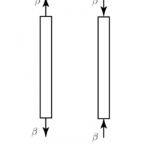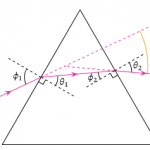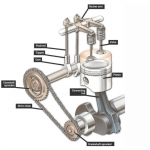The tipping angle of a load is an important consideration when dealing with the rotational equilibrium of machines or structures. In this article, we will learn more about the applicability of tipping angle to loads, calculation of tipping angle, and tipping hazards.
Applicability of Tipping Angle to Loads
Discussing the application of tipping angle to loads always involves the concepts of torque and center of gravity. To understand what all these are, we conceptualize an arbitrary object laying on a flat surface as the figure below shows.
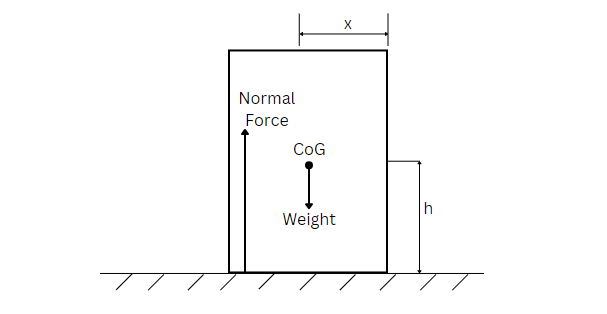
From Figure 1, the object is experiencing two forces: its weight acting through its center of gravity (CoG), and the normal force as a reaction from the surface. These two forces act in direct opposition to each other and keep the object in equilibrium.
Also, the CoG is located at a height, h, from the supporting surface, and at a lateral distance, x, from the pivot or rotation point. As the surface tilts, a torque develops due to the normal force, tending to rotate the object in a clockwise direction. The weight of the object tends to rotate the object in the anti-clockwise direction about the pivot in Figure 2.
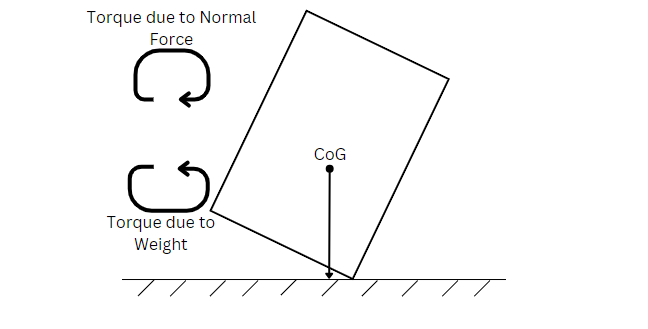
At this point, the object remains in equilibrium because the CoG is still above the support base of the object. As tilting progresses, the CoG arrives at the pivot, which is the end of the support base. This point is the object’s tipping point and the angle (θ) is the tipping angle, as Figure 3 shows.
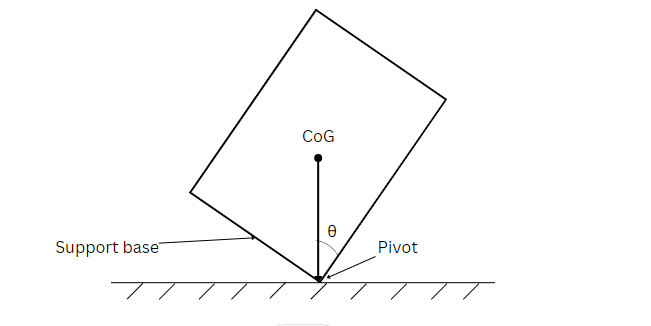
Tilting the surface beyond this angle causes the object to lose equilibrium and overturn under the influence of its weight. Thus, designers must know the tipping angle for a structure or machine as well as provide resistance against any force that wants to initiate its occurrence.
Calculation of Tipping Angle
The tipping angle of a structure is not dependent on any external force that it is experiencing, although these forces can initiate it. Rather, it is due to the interaction between its center of gravity and its geometry. Thus, the first step of calculating the tipping angle of a structure is finding its center of gravity. This is straightforward for structures with uniform density because the center of gravity coincides with the center of area. However, for structures not having uniform density, the process is more tedious as it requires integration of the mass across the structure’s axes to determine the mass distribution. After determining the CoG location, the calculation of the tipping angle (θ) is as follows:
![]()
In the equation above, x represents the perpendicular distance between the CoG and the tilting edge of the support base. While h is the height of the CoG from the support base.
Tipping Hazards
The concept of tipping angle is important in industry, as the general approach is to avoid it, thereby preventing the initiation of tipping loads.
Preventing Tipping of Vehicles
Designing against tipping is a key aspect for vehicle manufacturers, especially as cars traverse roads of varying slopes. Generally, they achieve this by making the CoG as low as possible. Particularly in race cars, which move at high speeds and experience large overturning torques. For trucks, this is not easy to achieve because of their height and loads that they carry. This is even more complex when it comes to articulated trucks that tip sand, gravel, etc. As they offload their contents, the CoG constantly changes, thus the need for the following safety measures:
- Ensure the ground is stable by tipping only when the vehicle is on a level and firm surface. Because instability of the ground can quickly change the CoG and the vehicle could reach its tipping angle.
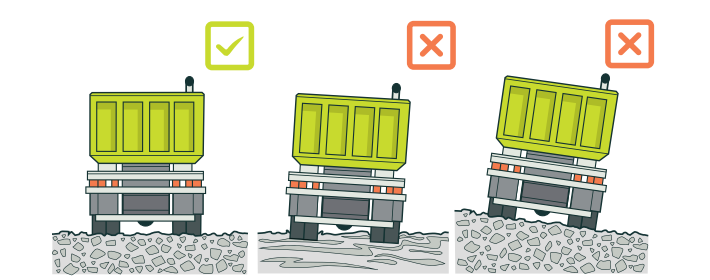
- Set up exclusion zones around the truck to ensure the safety of personnel and other equipment during tipping. Generally, this is about 15 feet behind the truck, and 1.5 times its length on each side.
- Utilize trained spotters to guide drivers. Especially if the vehicle is long or large, due to limited visibility of the driver.
- The vehicle should be in good condition so that it performs according to the manufacturer’s specifications.
Tipping Hazards in Lifting
Lifting operations is another activity where equipment is prone to attaining their tipping angle, if not properly managed. To avoid tipping, cranes typically use outriggers and other measures to counterbalance the load weight.
Also, the lifting point should be directly above the CoG of the load. This ensures that the forces in each sling balance themselves out. Another parameter to control when ensuring stability is the load radius, which is the distance between the crane and the load. The further away the load is, the larger its overturning torque on the crane. As a result, it is best practice to lift heavier loads as close as practicable to the crane’s center.
